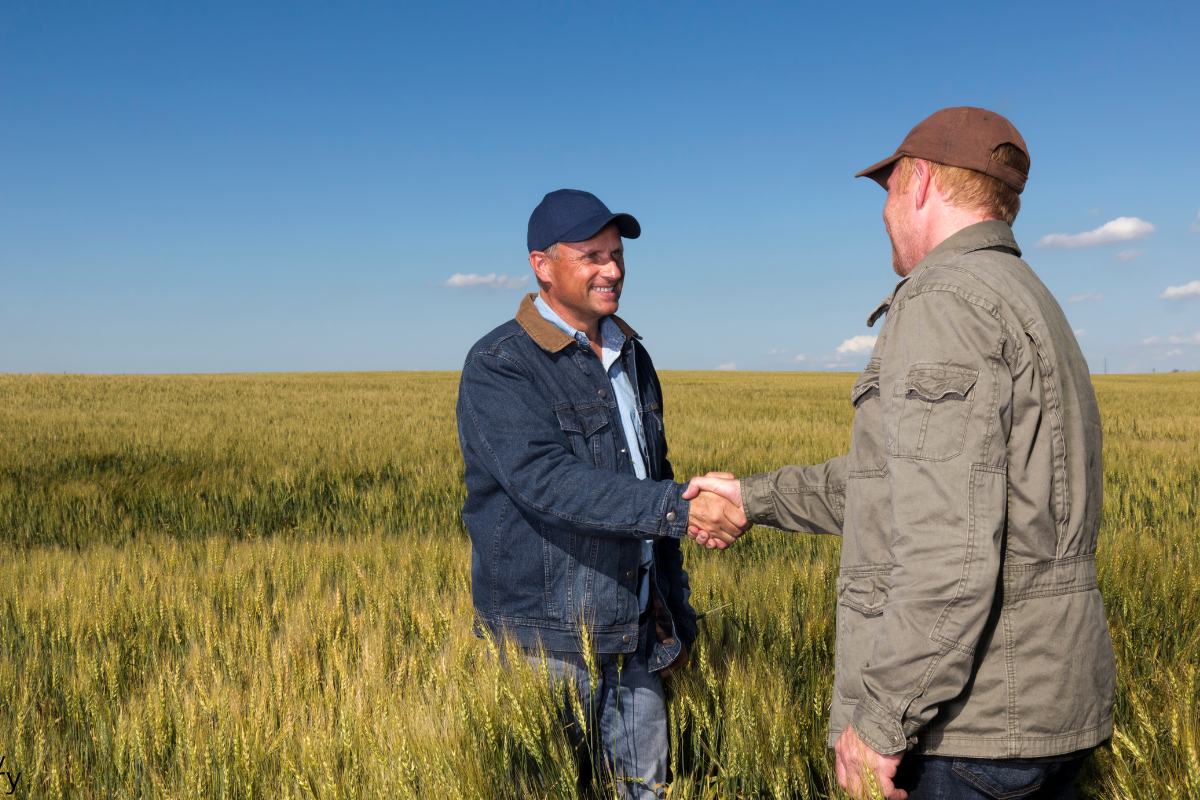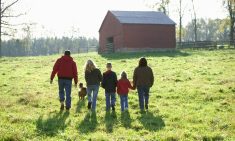Let’s say you’re pretty content with the way things are. You feel reasonably successful and you’re at a stage in your farming life where you don’t feel any great need to expand the operation. The value of your assets — especially your land — has been increasing pretty impressively and your balance sheet is a healthy shade of black. There’s even a substantial amount of surplus cash in your bank account that you don’t really need for retirement, since that’s all taken care of, and that you certainly don’t need to run the operation.
So, how do you stop that money from burning a hole in your pocket?
The solution, of course, might be to look at some off-farm investments. But where do you even start with that? What could you invest in that would give you a higher return that the traditionally safe stocks and bonds? And what would be a little more exciting, and maybe a bit more hands-on?
Read Also

Are you ready for farm succession?
What motivates some farmers to make a succession plan while others don’t seem worried.
Like other farm business advisors, Backswath Management in Winnipeg has been hearing from clients that they’ve got this problem. They have built up a healthy cash reserve and aren’t quite sure what to do with it.
It’s a good problem to have, but a problem none the less.
“How do I make my business efficient? How do I invest properly?” says Brent Metcalfe, Backswath’s acquisitions and investments lead. “These are smart business people but they’re already busy running their existing farms. Some of them are saying that they would love to invest outside of their farm in something but they don’t have the time or necessarily have the know-how to do it.”
That’s prompted Backswath to come up with a possible solution for these farmers, and to hire Metcalfe, who describes himself as a serial entrepreneur who has owned and sold numerous businesses in his lifetime, to help develop an investment model for today’s agricultural world.
A unique model for off-farm investing
“We have come up with a concept to help our clients that want to diversify their business portfolios,” Metcalfe says. “We’ll go out and search for some business opportunities for them and bring them back, and help them potentially purchase as an investment group.”
Although Metcalfe and his team are just in the process of getting the new farmer investment group off the ground, there is a lot of interest and it’s a model they believe has potential because of a number of factors. First, the companies that they are looking at for the group to buy into won’t be too far out of a farmer’s wheelhouse.
“A lot of the target opportunities that we’ll look to find and bring back to the farmers group will be things that are a couple of steps either side of the farm,” Metcalfe says. “We may have a group that wants to look outside of ag in order to diversify, but I think a lot of it will be ag-based because of the comfort level and the understanding of it. The idea is to help them diversify their business mix and smooth out the peaks and valleys of their cash flows.”
The target companies will be smaller niche businesses that will be successful and established, not startups.
“They won’t be going out and buying John Deere dealerships,” Metcalfe says. “But, for example, a Saskatchewan pulse grower and processor may look at a packaging and marketing company or another smaller, local processor. We are focusing on up-and-running, profitable, established businesses. Startups can be risky, and that’s not what we’re targeting at the moment.”
Not too big and not too small
Many of these types of agribusinesses are just the right size for the model to work.
“They are too small for your traditional investment fund to be interested in but they’re too big for a management buyout or a single entrepreneur to potentially come in and buy, so we feel there’s a niche in that market that we can help fill with this group,” Metcalfe says. “Based on the people we’ve been talking to and others in the corporate financial world, we believe there is tremendous potential.”
Being located in Western Canada is also another big factor in the launch of the group.
“We’re based in Western Canada and the investors are based in Western Canada, and there are a lot of businesses that are owned by the baby-boomer generation that don’t have an exit strategy or a retirement plan, and this can be their exit strategy/retirement plan potentially,” Metcalfe says.
There won’t be any hard-selling. One of the key differences in this model compared to investing in mutual funds or stocks is that information about the various companies seeking capital will be brought back to the group for everyone to mull over, and they can each decide if it is something they want to invest in.
“They’ll individually decide if they want to be involved in that one,” Metcalfe says. “If we have enough people that are interested, we’ll go do it. The people that are not interested, don’t have to do it. If they were to invest in a traditional fund, everybody’s in it if the decision has been made, so there’s a key difference there.”
Managing risk
With a higher return on an investment there is also higher risk, so how much risk are farmers willing to take with their hard-earned cash and how will they manage that risk?
“With good management and a good understanding of the industry and the business, we can identify and understand those risks going in and how to deal with them,” Metcalfe says. “You can be way more educated than going out and dabbling in the stock market. When you invest in a mutual fund in the stock market, you have zero ability to provide any input or direction; you’re a pure investor. With this model, it will be more hands-on; it’s still a passive investment but farmers will have more ability to guide and choose than just phoning up or going online and buying some stocks.”
What does a typical investor look like?
So, who will be the typical investor in the Backswath model? First, they have to be able to invest a substantial amount of money without putting up anything they cannot afford to be without.
“We are looking for investors that have the wherewithal within their business to be able to invest a minimum of $100,000,” Metcalfe says. “The money that they commit to the project needs to be pure excess that they don’t need in their existing business. We can’t have somebody committing X amount of dollars and then phoning a month later saying, ‘The quarter section next door came up for sale and I need that money back.’ If you’re mortgaging your house to do this, we, and other farm investors in the group, don’t want you as an investor. You are not a good fit. We want people that truly have the ability and the financial means to do this.”
Second, they need to have values that align with the businesses they are investing in, a certain amount of risk tolerance, and a desire to invest long-term in projects that are cash-flow related rather than asset heavy.
Finally, Metcalfe says they need to bring something to the party besides cash.
“The other piece is, how can they help us? Do they have some contacts or expertise in corporate boards and governance because the intention will be, although it’s not a public company or a public fund, we will operate from a governance standpoint very much like a public business,” he says. “Are you a good candidate for a board of director’s role that would really help the business and direct it?” Not everyone is going to fit the mould.
“We’re looking for the people that want to do it for the same reasons that everybody else does,” Metcalfe says. “It’s important to us in this group that we’ve got similar-thinking, similar-minded people. That’s how this will deliver the most value to investors.”
















